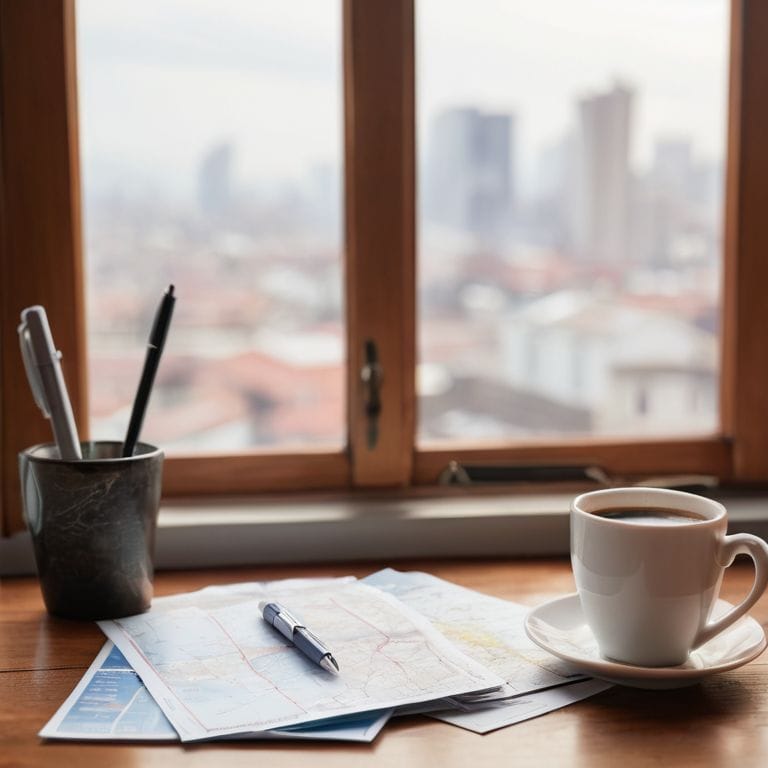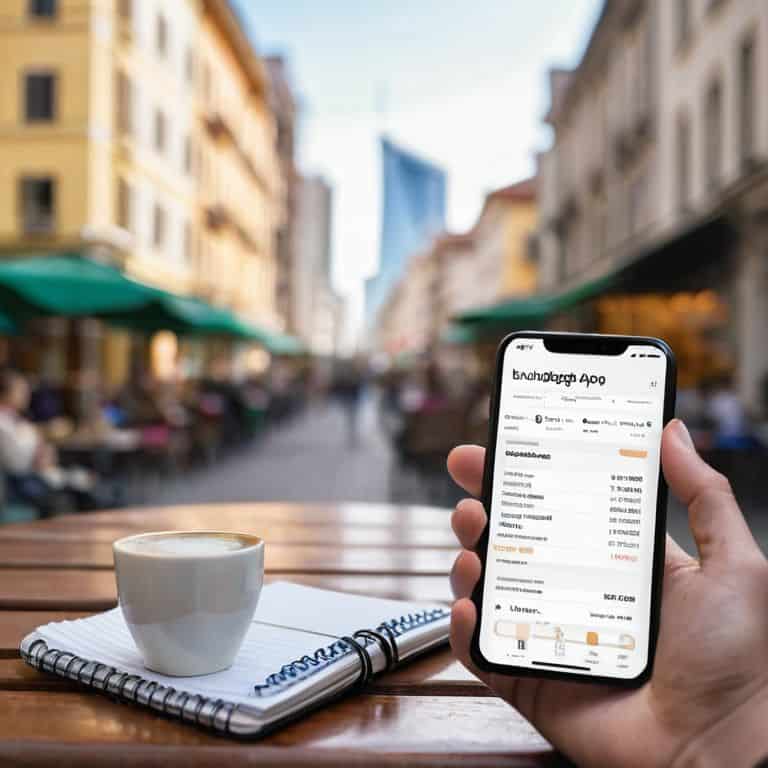I still remember the first time I embarked on a solo trip, and my biggest worry was how to budget for a solo trip without breaking the bank. The common myth that you need to be rich to travel alone is simply not true – I’ve met people from all walks of life on the road, and we all share one thing in common: a willingness to take the leap and be flexible. The key to making it work is to ditch the idea that budgeting has to be boring or restrictive, and instead, focus on prioritizing your spending.
In this article, I’ll share my honest, no-hype advice on how to budget for a solo trip, from tracking your expenses to finding affordable accommodation. I’ll give you the lowdown on how to make the most of your money, without sacrificing the experiences that make travel so rewarding. You’ll learn how to create a budget that works for you, not against you, and how to stay on track even when things don’t go as planned. By the end of this guide, you’ll be equipped with the practical knowledge and confidence to take on your next solo adventure, without worrying about blowing your budget.
Table of Contents
Guide Overview: What You'll Need

Total Time: 1 hour 30 minutes
Estimated Cost: $0 – $100
Difficulty Level: Easy
Tools Required
- Computer (with internet access)
- Calculator (or phone app)
- Notebook (or digital note-taking tool)
Supplies & Materials
- Travel brochures (or online research materials)
- Pencil and paper (for budget calculations)
- Calendar (to plan trip itinerary)
Step-by-Step Instructions
- 1. First, track your expenses for a month to get a realistic idea of your spending habits – this will help you identify areas where you can cut back and allocate that money towards your solo trip. Start by writing down every single transaction, no matter how small, in a notebook or using an app like Mint. I know it sounds tedious, but trust me, it’s worth it to get a clear picture of where your money is going.
- 2. Next, set a daily budget for your trip by researching the cost of living in your destination. Look up the prices of accommodation, food, and transportation to get an estimate of how much you’ll need per day. Don’t forget to factor in miscellaneous expenses like souvenirs, tips, and unexpected costs. I like to add a 10-20% buffer to my daily budget to account for any unexpected expenses.
- 3. Now, create a detailed itinerary of your trip, including all the activities and sights you want to see. This will help you estimate the costs of entrance fees, guided tours, and other expenses. Be sure to also include downtime and flexibility in your itinerary, as overplanning can lead to burnout and increased expenses. I recommend leaving at least one day free for spontaneity and local exploration.
- 4. To save money on accommodation, consider staying in hostels or guesthouses, which are often cheaper than hotels and offer a more social atmosphere. You can also look into house-sitting or couch-surfing options, which can be a great way to save money and meet locals. Just be sure to research the area and read reviews before booking.
- 5. When it comes to food, eating street food or at local markets can be a great way to save money and experience the local culture. Avoid eating at touristy restaurants, which tend to be overpriced and less authentic. Instead, try to find local eateries or food stalls that are popular with the locals. I also recommend buying snacks and groceries at local markets to save money on food.
- 6. Transportation costs can add up quickly, so research affordable options like public transportation, walking, or biking. Consider buying a local SIM card or portable Wi-Fi hotspot to stay connected and navigate your surroundings. I also recommend downloading transportation apps like Citymapper or Google Maps to help you get around.
- 7. Finally, review and adjust your budget regularly to ensure you’re staying on track. Use a budgeting app like Trail Wallet or You Need a Budget to track your expenses and make adjustments as needed. Don’t be too hard on yourself if you go over budget – just roll with it and make adjustments for the next day. Remember, budgeting for a solo trip is all about finding a balance between planning and flexibility.
Budgeting for Solo Travel

As I’ve learned from my own experiences, budgeting apps for travelers can be a lifesaver when it comes to keeping track of expenses on the go. I’ve tried out a few different options, and my favorite is one that allows me to categorize my spending into different areas, like food, accommodation, and activities. This helps me see where my money is going and make adjustments as needed.
One of the biggest challenges of solo travel is finding affordable accommodation options that still meet your needs. I’ve had my fair share of dodgy hostels and overpriced hotels, but I’ve also learned how to sniff out a good deal. My top tip is to research daily expense tracking for solo trips to get an idea of what you can expect to pay in different areas. This will help you make informed decisions about where to stay and how to allocate your budget.
When it comes to solo travel cost estimation tools, I’m a big fan of using online resources to get a rough idea of what things will cost in different destinations. This can help you avoid money saving tips for backpackers that don’t actually work, and instead focus on tried-and-true methods for stretching your budget. By being mindful of your spending and taking advantage of budget friendly activities for solo travelers, you can have a rich and fulfilling experience without breaking the bank.
Ditching Broke Budgeting Apps
When it comes to tracking expenses, I swear by budgeting apps – they’re a game-changer for solo travelers. I’ve tried a few, but my top picks are Trail Wallet and Mint. Trail Wallet is great for logging daily expenses on the go, while Mint helps me keep an eye on my overall finances back home.
I use them to categorize everything from accommodation and food to gear and activities, making it easier to see where my money’s going. It’s amazing how much you can save just by being aware of your spending habits. Give them a try and see what works best for you – your wallet will thank you.
Tracking Daily Expenses
When I’m on the road, I use a simple notebook to track my daily expenses – it’s old-school, but it works. I jot down every purchase, from coffee to hostel stays, and tally it up at the end of the day. It’s not about being meticulous, it’s about being aware of where my money’s going. I also use an app to digitize my expenses, just in case I lose my notebook (which, let’s be real, has happened before).
I’ve found that carrying a small notebook helps me stay on top of my spending, and it’s also a great way to reflect on my daily experiences – what I spent money on, what I enjoyed, and what I could’ve done differently.
Beyond the Spreadsheet: 5 Real-World Tips for Budgeting Your Solo Trip
- Start by figuring out your daily baseline: what’s the minimum you need to get by in a new city, and what are you willing to splurge on?
- Use the 50/30/20 rule as a rough guideline: 50% of your budget for necessities, 30% for discretionary spending, and 20% for saving and emergencies
- Consider budgeting in tiers: essential expenses like accommodation and food, secondary expenses like transportation and activities, and ‘treat yourself’ expenses like fancy dinners or tours
- Be honest with yourself about your spending habits: if you know you’ll blow a bunch of cash on souvenirs or drinks, factor that into your budget from the start
- Leave some wiggle room for the unexpected: whether it’s a medical emergency, a last-minute flight change, or an impromptu road trip, having a cushion of extra funds can be a lifesaver on the road
Solo Travel Budgeting Essentials
Start by calculating your daily expenses, including food, accommodation, and transportation, to get a realistic estimate of your solo trip costs
Utilize budgeting apps to track your spending and stay on top of your finances, avoiding unnecessary expenses and staying within your means
Prioritize experiences over material possessions, and be prepared to make adjustments to your budget as you navigate the ups and downs of solo travel
The Budgeting Truth
Budgeting for a solo trip isn’t about being cheap, it’s about being free – free to take the road less traveled, to eat at the local dive, and to say yes to the spontaneous adventures that make travel worth writing about.
Clara Bishop
Embracing the Freedom of Solo Travel

As I reflect on my own experiences with solo travel, I’m reminded that budgeting is just the beginning. It’s about being intentional with your spending, using the right tools like budgeting apps, and tracking your daily expenses to ensure you’re making the most of your trip. By following these steps, you’ll be well on your way to creating a budget that works for you, not against you. And when you’re not stressed about money, you can focus on the things that truly matter – like immersing yourself in local cultures, trying new foods, and meeting fellow travelers.
So, as you embark on your solo travel journey, remember that it’s okay to take the road less traveled. Don’t be afraid to get a little lost and make mistakes – they’re often the best learning experiences. With a solid budget in place and a willingness to be flexible, you’ll be free to explore, discover, and create unforgettable memories. And when you return home, you’ll have a newfound appreciation for the beauty of solo travel and the confidence to plan your next adventure.
Frequently Asked Questions
How do I determine a daily budget that accounts for unexpected expenses without being too restrictive?
For me, it’s all about padding my daily budget with a 20-30% cushion for unexpected stuff, like a sudden rainstorm that ruins my plans or a incredible street food find that’s worth splurging on. I also review my past travel expenses to get a realistic idea of what I actually spend in a day.
What are some common budgeting mistakes that solo travelers make, and how can I avoid them?
Honestly, most solo travelers I’ve met blow their budget on unnecessary gear or overpriced tours. Don’t fall for it! Avoid exchanging money at airports, and ditch the fancy travel wallet – a simple debit card and a money-tracking app will do. And please, for the love of street food, don’t eat at touristy restaurants every night.
Are there any budgeting strategies that are specifically tailored for long-term solo travel, such as calculating costs for multiple destinations and modes of transportation?
For long-term solo travel, I swear by the “destination clustering” method – group similar destinations together to minimize transport costs. Calculate costs for each cluster, then prioritize based on budget and interest. I also use a spreadsheet to track expenses across multiple destinations, making it easier to adjust my budget on the fly.
